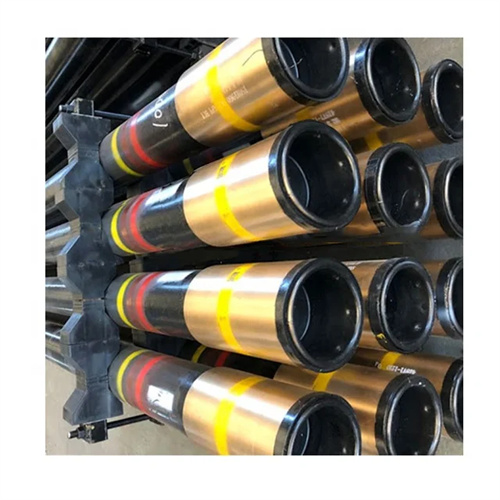Table of Contents
Benefits of Using OCTG Pipe in Oilfield Operations
Oil Country Tubular Goods (OCTG) play a crucial role in the oil and gas industry, particularly in drilling and extraction operations. These specialized pipes, including tubing and casing, are designed to withstand the harsh conditions of oilfields. OCTG pipes are available in both seamless and welded varieties, each offering unique advantages for specific applications.
Seamless OCTG pipes are manufactured without any welding seams, resulting in a stronger and more reliable product. This seamless construction reduces the risk of pipe failure, making it ideal for high-pressure and high-temperature environments commonly found in oilfield operations. Seamless pipes also offer improved corrosion resistance, ensuring a longer service life and lower maintenance costs.
On the other hand, welded OCTG pipes are created by welding together individual sections of pipe. While welded pipes may not have the same level of strength as seamless pipes, they are more cost-effective and easier to produce in large quantities. Welded OCTG pipes are commonly used in less demanding applications where high pressure and temperature are not major concerns.

One of the key benefits of using OCTG pipes in oilfield operations is their ability to protect the wellbore and ensure efficient extraction of oil and gas reserves. Casing pipes are installed in the wellbore to prevent collapse and maintain the integrity of the hole. By providing structural support, casing pipes help to stabilize the well and prevent leaks or other complications during drilling and production activities.
In addition to casing pipes, tubing is used to transport oil and gas from the well to the surface. Tubing must withstand the pressure and corrosive elements present in the well, making OCTG tubing an essential component of oilfield operations. Whether it’s for injecting Chemicals, extracting oil, or monitoring well conditions, OCTG tubing plays a critical role in the production process.
API Q125 is a specific grade of OCTG pipe that meets the standards set by the American Petroleum Institute (API). This high-strength steel grade is designed for use in extreme conditions, making it well-suited for challenging oilfield environments. API Q125 pipes offer superior performance and durability, ensuring reliable operation in demanding applications.
In conclusion, OCTG pipes are essential components in oilfield operations, providing structural support, corrosion resistance, and reliable performance. Whether choosing seamless or welded pipes, operators can benefit from the versatility and durability of OCTG products. By selecting the right OCTG pipe for each application, oil and gas companies can enhance efficiency, reduce maintenance costs, and ensure the success of their drilling and production activities.
Key Differences Between Seamless and Welded OCTG Pipes
Oil Country Tubular Goods (OCTG) play a crucial role in the oil and gas industry, serving as essential components in drilling and extraction operations. Among the various types of OCTG pipes available in the market, seamless and welded pipes are two primary options that cater to different needs and applications. Understanding the key differences between seamless and welded OCTG pipes is essential for making informed decisions in the industry.
Seamless OCTG pipes are manufactured through a process that involves piercing a solid billet to create a hollow shell. This seamless production method results in pipes with uniformity in structure and strength, making them ideal for high-pressure applications. The absence of a welded seam in seamless pipes eliminates the risk of weak points, enhancing their reliability and durability in demanding environments. Seamless OCTG pipes are known for their superior performance in critical operations where structural integrity is paramount.
On the other hand, welded OCTG pipes are manufactured by welding together steel plates or coils to form a cylindrical shape. While the welding process introduces a seam along the length of the pipe, welded pipes offer cost advantages and greater flexibility in terms of size and length. Welded OCTG pipes are commonly used in less demanding applications where high pressure or extreme conditions are not a primary concern. The welding seam in these pipes may impact their strength and integrity compared to seamless pipes.
One of the key differences between seamless and welded OCTG pipes lies in their manufacturing processes. Seamless pipes undergo a complex production method that involves heating and extruding a solid steel billet to create a seamless tube. This process results in pipes with a consistent composition and structure throughout the length, offering enhanced strength and reliability. In contrast, welded pipes are created by welding together steel plates or coils, which may introduce variations in the material properties along the seam.
In terms of performance, seamless OCTG pipes are preferred for applications that require high pressure resistance and structural integrity. The absence of a welded seam in seamless pipes eliminates the risk of seam failure under extreme conditions, making them suitable for critical operations in the oil and gas industry. Welded OCTG pipes, while cost-effective and versatile, may have limitations in terms of pressure handling and structural robustness compared to seamless pipes.

Overall, the choice between seamless and welded OCTG pipes depends on the specific requirements of the application. Seamless pipes offer superior strength and reliability for high-pressure operations, while welded pipes provide cost advantages and flexibility in design. Understanding the key differences between seamless and welded OCTG pipes is essential for selecting the most suitable option based on the operational needs and budget constraints in the oil and gas industry.
